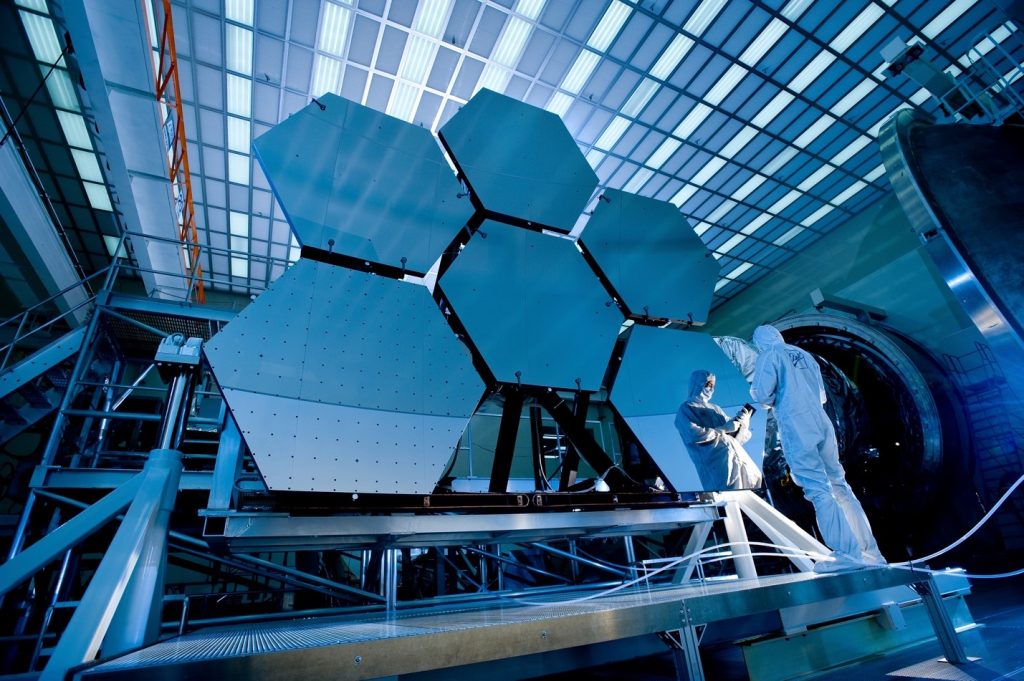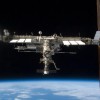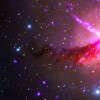Looking UP: Space-Based Satellites That Feed our Fascination with the Universe
Imaging technology is helping astronomers explore and understand the universe
Throughout the ages, there have been many inventions that have helped drive scientific discoveries, giving us a greater understanding of the universe. In 1608, when a Dutch spectacle maker attempted to patent his telescope technology, it motivated many others who heard about it to build their own telescopes. One of them was Galileo Galilei, who then came up with the idea of pointing it towards the night’s sky. He found mountains on the moon, moons around Jupiter, and even the Milky Way.
Since then, we’ve continued to learn more about the universe, enabled by technological advances such as bigger, more sophisticated telescopes and different kinds of telescopes – ones that observe outside of our visible range. A big disadvantage of using a telescope on earth is the atmosphere, which protects us from harmful radiation from the sun, but also blocks almost everything except the visible range and radio frequencies.

However, a telescope in space could see what we couldn’t. As a result, the first space-based telescopes worked in frequency ranges that we couldn’t normally detect from earth –gamma and x-rays, and infrared and ultraviolet light. Telescopes first arrived in space in the 1960’s, and there have been dozens launched since. While the majority have been attuned to these frequencies, a few have been able to see in the same range as the first telescopes – the visible spectrum. Perhaps the most famous of these is the Hubble Space Telescope. Although it wasn’t the first, it is one of the largest and most versatile. It’s known as both an important tool for research, but it’s also become a bit of a celebrity, showing us pictures that inspire our curiosity and excitement for outer space.

The Impact of NASA Hubble Space Telescope
The National Aeronautics and Space Administration (NASA) began construction on the Hubble in the 1970s, and nearly 20 years later, it launched aboard the Discovery Space Shuttle. Originally, the Hubble, had five imaging instruments, however after four servicing missions between 1993 and 2009, all of the original instruments have been replaced with six new imaging instruments:
1. The Wide-Field Camera 3, which has two channels. The first is an ultraviolet-visible channel, used to study nearby galaxies and galaxies undergoing burst of star formation. The second is a near-infrared channel, which is used to study the light from distant galaxies.
2. The Cosmic Origins Spectrograph, which focuses exclusively in ultraviolet light. This instrument focuses with pinpoint precision on points of light, such as stars and quasars
3. The Advanced Camera for Surveys, which can see in wavelengths from far- ultraviolet to visible light and uses a trio of cameras. The wide-field camera, which conducts broad surveys of the universe. The high-resolution camera, which provides detailed images of inner regions of galaxies searching nearby stars for planets and future planets. And the solar blind camera which blocks visible light to enhance ultraviolet sensitivity which focuses on hot stars and planets.
4. The Near-Infrared Camera and Multi-Object Spectrometer, which is Hubble’s heat sensor, focusing exclusively in infrared light. This instrument hosts three “cameras” which provide different fields of view, and are designed to see objects in near-infrared light, penetrated interstellar gas and dust that block visible light and must operate at a cool -321 degrees Fahrenheit.
5. The Space Telescope Imaging Spectrograph, which looks at large areas in ultraviolet, visible and near-infrared wavelengths. This instrument takes detailed pictures of celestial objects and is able to sample 500 points along a celestial object simultaneously. In addition to separating light from the cosmos creating a wavelength fingerprint, which gives information about the temperature, chemical composition, density and motion of the data point for scientists to examine.
6. The Fine Guidance Sensors, which guide the Hubble around Earth. The Hubble has three fine-guidance sensors, two sensors that point the telescope at the astronomical target in a scientific instruments field of view and one sensor that is available to perform scientific observations. These sensors provide star positions ~10X more precise then those observed from a ground telescope.

Since the launch of the Hubble, the telescope has archived over 140TB of data while it continues to generate roughly 10TB of new archive data per year. In addition to archiving massive amounts of data, the Hubble has been responsible for making over 1.2 million observations over the past 27 years. The Hubble has discovered a runaway universe, that monster black holes are everywhere, how old the universe is (13.8 billion years +/- 3%), the birth and death of stars, hundreds of planets and moons, exploring and finding thousands of galaxies, seeing light echoes and much more.

The Hubble has pioneered the space telescope industry, and its success has inspired the invention of many different space telescopes and observatories by space agencies and private companies. Similar to the original telescope boom seen in the 1600’s, the space telescopes invented and launched after the Hubble have been designed to serve different missions and goals. The space telescopes/observatories that have been invented and launched based off the Hubble’s successes, have used different imaging technologies to collect data in many different forms such as far infrared, x-ray, fermi gamma ray and visible light. To serve the purpose of their missions these telescopes and observatories navigate in different realms of the universe, although they primarily navigate around the Earth, or the sun. However, there has never been a telescope invented to serve as a successor or support to the Hubble, that is, until the creation of the James Webb Space Telescope (JWST), which will be launched in the spring of 2019.

What’s next for Space Imaging?
Like the Hubble, the JWST has been under construction for nearly 22 years, undergoing a name change in 2002 from the Next Generation Space Telescope to the James Webb Space Telescope. The name change came as a dedication to NASA’s second administrator (James Webb) for his immense devotion to the space program leading the Apollo series and more than 75 launches in his lifetime. Through many budget cuts and federal funding re-allocations, NASA opened its doors to create a joint JWST development group with the European Space Agency and the Canadian Space Agency.
The JWST will be the largest and most powerful space telescope ever launched at 69.5 feet unfolded! With the successes and failures of space telescopes that precede it, the JWST will see in mid to near-infrared light primarily, which will aid in its mission of looking back to the beginning stars and galaxy formations from the vast dark possible. The Hubble sees primarily in the visible and ultraviolet light spectra. Unlike its predecessor, the JWST will orbit around the second Sun-Earth Lagrange point, which makes it unserviceable. With the JWST orbiting closer to the sun than the Hubble, the technology onboard will need to operate at a cool – 370 degrees Fahrenheit. The JWST will be installed with four pieces of imaging technology: a mid-infrared instrument, near-infrared camera, near-infrared spectrograph and a fine-guidance sensor/infrared imager & slitless spectrograph. Since the universe is expanding, very distant objects stretch towards the red part of the color spectrum — the more that “red shift” has happened to an object’s image, the further away it is. These top of the line imaging technologies are designed to allow the JWST to see further back into time than any other space telescope, and will enable who knows how many earth-shattering observations!
With the launch of the James Webb Space Telescope, the world sits in anticipation of what it may find! Who knows, it may just find the building blocks of life elsewhere in the universe!
Teledyne Technologies companies have decades of experience supplying solutions to world’s most prominent space agencies which has earned us an enviable pedigree in space imaging. Read more here: http://www.teledyneimaging.com/space-and-defense



 A View From Above: Imaging from the ISS
A View From Above: Imaging from the ISS  Imaging with the Chandra X-ray Observatory: Radiation, CCD Arrays, Workflows, and Space Cats
Imaging with the Chandra X-ray Observatory: Radiation, CCD Arrays, Workflows, and Space Cats 